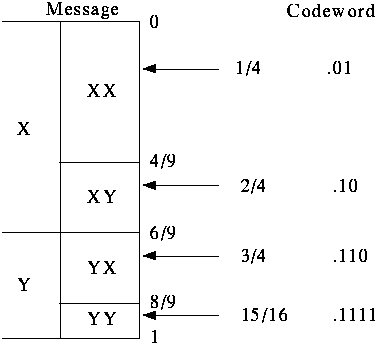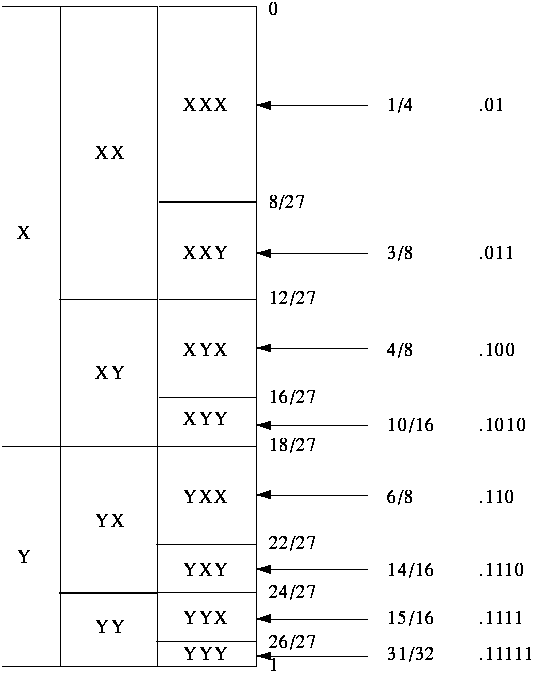


Next: Lempel-Ziv-Welch (LZW) Algorithm
Up: Lossless Compression Algorithms (Entropy
Previous: Adaptive Huffman Coding
Huffman coding and the like use an integer number (k) of bits for
each symbol, hence k is never less than 1. Sometimes, e.g., when
sending a 1-bit image, compression becomes impossible.
- Idea: Suppose alphabet was
X, Y
and
prob(X) = 2/3
prob(Y) = 1/3
- If we are only concerned with encoding length 2 messages, then
we can map all possible messages to intervals in the range [0..1]:

- To encode message, just send enough bits of a binary fraction
that uniquely specifies the interval.

- Similarly, we can map all possible length 3 messages to
intervals in the range [0..1]:

- Q: How to encode X Y X X Y X ?
Q: What about an alphabet with 26 symbols, or 256 symbols, ...?
- In general, number of bits is determined by the size of the
interval.
Examples:
- first interval is 8/27, needs 2 bits -> 2/3 bit per symbol (X)
- last interval is 1/27, need 5 bits
- In general, need
 bits
to represent interval of size p.
Approaches optimal encoding as message length got to infinity.
bits
to represent interval of size p.
Approaches optimal encoding as message length got to infinity.
- Problem: how to determine probabilities?
- Simple idea is to use adaptive model: Start with guess of symbol
frequencies. Update frequency with each new symbol.
- Another idea is to take account of intersymbol probabilities,
e.g., Prediction by Partial Matching.
- Implementation Notes: Can be CPU and memory intensive; patented.



Next: Lempel-Ziv-Welch (LZW) Algorithm
Up: Lossless Compression Algorithms (Entropy
Previous: Adaptive Huffman Coding
Dave Marshall
10/4/2001


